History
This type was released to succeed the Fokker C.III, which was built in a small series for Spain.
In fact it was a development from the Fokker C.I. The aircraft, in fact a long range scout, had a rather broad fuselage, with much room for the crew, who appreciated this very much.
A disadvantage was the decrease of the maximum speed
Three variants were developed:
- Fokker C.IVA:
- with a smaller wing span of 12,07 m;
- Fokker C.IVB:
- with a larger wing span of 12,91 m
- Fokker C.IVC:
- with a wing span of 14.28 m.
According to Fokker, the wings could be exchanged by four men within 45 minutes.
Three aircraft were sold to the USA, after a demonstration for General Mitchell. These aircraft were tested under the designation CO-4 #1 till CO-4 #3 (CO-4 = Corps Observation model 4).
One of these aircraft was completely restored to flying condition at the Owl Head Museum. (check website: Fokker C.IV flies again.)
A smaller version was the Fokker D.C.I. only used by the NEIAF.
Spain intended to built the D.C.I under license, but choose to built and use the Fokker C.IV, of which twenty were built at Madrid.
In 1924 200 aircraft were exported to Russia and in 1923 the Argentine navy ordered three aircraft equipped with floats.
| Dimensions: | |||
| Length: | 9,3 m | Wingspan: | 12,9 m |
| Height: | 3,4 m | Wing area: | 39,2 m2 |
| Weights: | |||
| Empty weight: | 1450 kg | Max. start weight: | 2270 kg |
| Performances: | |||
| Max. speed: | 214 km/hr | Climbing speed: | - m/min |
| Cruising speed: | - km/hr | ||
| Range: | 1200 km | Service ceiling: | 5500 m |
| Miscellaneous: | |||
| Engine type: | One Napier Lion rated 450 hp. | ||
| Crew: |
Two men: one aviator plus one observer/air gunner |
||
| Armament: | Three or four7.9 mm machine guns | ||
Versions.
- C.IVA:
- a fighter version with reduced wingspan of 12.07 m an a lower start weight.
- C.IVB:
- The standard production version with a wingspan of 12,91 m and equipped with a Napier Lion engine of 450 hp, a Rolls Royce Eagle or American Liberty engine.
- C.IVC:
- long range scout with extended wingspan of 14.28 m. Delivered to the LVA
- C.IV-W: Version of the C.IVC with floats and a Napier Lion engine.
- C.IVH:
- Special built aircraft for the 1924 flight from Amsterdam to Tokyo.
- XCO-4:
- US Army designation for three evaluation examples.
- CO-4A:
- US Army designation for five production aircraft with a 420 hp Liberty L-12A and an (with 24 cm) enlarged fuselage.
- AO-1:
- US Army designation for a modified XCO-4.
In Service with LVA and NEIAF.
In Service with LVA.
The LVA ordered a total of thirty examples in two series. The first series was delivered in 1923 and serials 550 till 563 were applied. The second series, registered 564 til 579, was delivered in 1924.
The so called "LVA-factory" (in fact the technical service of the LVA) produced one aircraft, registered 580, from delivered spare parts.
The aircraft were initially equipped with a Liberty engine rated 400 hp. This engine, when worn out, was replaced with a Hispano-Suiza 12 Jb rated 350 hp.
Some were equipped with a Hispano-Suiza 52-12i rated 350 hp, also used in the Fokkers C.VI.
The Fokker C.IV proofed to be a very reliable aircraft.

[Enclosed photo from BeeldBank NIMH. Click on photo for ordering information]

[Enclosed photo from BeeldBank NIMH. Click on photo for ordering information]

[Enclosed photo from BeeldBank NIMH. Click on photo for ordering information]
In service with NEIAF.
The ML-KNIL ordered ten Fokkers C-IVA's plus ten some what lighter aircraft, designated as Fokker D.C.I. later four of the aircraft were modified to transport aircraft, some for photo reconnaissance and it is said that at least one has been modified and converted to Fokker D.C.I.

[Enclosed photo from BeeldBank NIMH. Click on photo for ordering information]
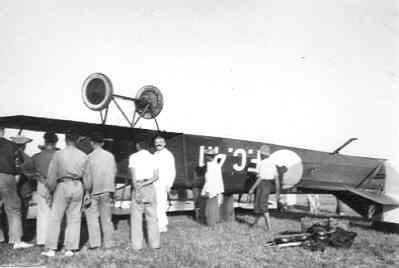
[Enclosed photo from BeeldBank NIMH. Click on photo for ordering information]
Serial overview LVA and NEIAF.
Serial overview LVA.
| Serials
Serials
|
Constr. nr.
Constr. nr.
|
Date in service
Date in service
|
Date out of service
Date out of service
|
Notes
notes
|
|---|---|---|---|---|
| 550 | 1923 | |||
| 551 | 1923 | |||
| 552 | 1923 | |||
| 553 | 1923 | |||
| 554 | 1923 | |||
| 555 | 1923 | |||
| 556 | 1923 | |||
| 557 | 1923 | |||
| 558 | 1923 | |||
| 559 | 1923 | |||
| 560 | 1923 | |||
| 561 | 1923 | |||
| 562 | 1923 | |||
| 563 | 1923 | |||
| 564 | 1923 | |||
| 564 | 1924 | |||
| 565 | 2924 | |||
| 566 | 1924 | |||
| 567 | 1924 | |||
| 568 | 1924 | |||
| 569 | 1924 | |||
| 570 | 1924 | |||
| 571 | 1924 | |||
| 572 | 1924 | |||
| 573 | 1924 | |||
| 574 | 1924 | |||
| 575 | 1924 | |||
| 576 | 1924 | |||
| 577 | 1924 | |||
| 578 | 1924 | 1938 | ||
| 579 | 1924 | |||
| 580 |
Serial overview NEIAF.
| Serials
Serials
|
Constr. nr.
Constr. nr.
|
Date in service
Date in service
|
Date out of service
Date out of service
|
Notes
notes
|
|---|---|---|---|---|
| F.C.411 | ||||
| F.C.412 | ||||
| F.C.413 | ||||
| F.C.414 | ||||
| F.C.415 | Modified to photo aircraft and re-registered F.C.415F | |||
| F.C.416 | ||||
| F.C.417 | Modified to transporter for four passengers and re-registered F.C.417T. | |||
| F.C.418 | Modified to photo aircraft and re-registered: F.C.418R | |||
| F.C.419 | ||||
| F.C.420 |
Scale 1/72
- VAMI
- Kit xx: A resin kit.
- Omega
- Kit 72130: a resin kit with decals for a Dutch LVA aircraft
Modelling add-on
- --
- Set --: --
Decals
- --
- Set --: --
Scale 1/48
- --
- Kit -: -
Modelling add-on
- --
- Set -: -
Decals
- --
- Set -: -
| Scheme | Colour name | FS number | WEM | Humbrol | XtraColor | Vallejo Model Color | Vallejo Model Air | |
|---|---|---|---|---|---|---|---|---|
| Fokker C.IV LVA | ||||||||
| Standard #1 | Upper surfaces | LVA Khaki | AC D04 | 29? / 155? | x2? /x251? | 70.921? / 70.887? | ||
| Undersides | LVA Blue | AC D05 | 115 ? | X-214? | ||||
| Fokker C.IV ML-KNIL | ||||||||
| Standaard #1 | Fuselage | (LVA) Khaki | AC D04 | 29? / 155? | x2? /x251? | 70.921? / 70.887? | ||
| Wings | Aluminium dope | 191 | X216 | 70.864 | ||||
Check www.paint4models.com for an extensive conversion table with lots of colour and paint systems.
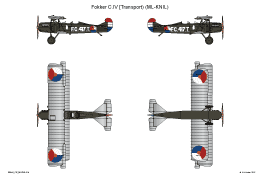
Literature.
| Verenigde Vleugels: De Fokker C.IV, Fokkers vergeten verkenner | M. Zwartelé | Pag. 18-19 | Maart 200 | |
| 40 Jaar luchtvaart in Indië | Gerard Casius & Thijs Postma | Pag. 25 - 27; 45 | 1986 | Uitgeverij De Alk, Alkmaar |
| Fokker,-vliegtuigen voor de Militaire Luchtvaart | Pag. 6 | 1982 | ||
| Van Luchtvaartafdeling tot Koninklijke Luchtmacht: 75 jaar Militaire Luchtvaart in Nederland | Koos van de Berg | Pag. 16 | Uitgever: Rebo Produkties, Sassenheim | |
| Militaire Luchtvaart in Nederlandsch-Indië in beeld. Deel 1 | Hugo Hooftman | Pag. 62 - 63 | 1978 | Uitgever: Europese Bibliotheek, Zaltbommel |
| Nederlandse Militaire Luchtvaart in Beeld. deel 1. | Hugo Hooftman | Pag. 98 - 99 | 1977 | Uitgever: Europese Bibliotheek, Zaltbommel |
| KLu Vliegtuigen: De vliegtuigen van de Koninklijke Luchtmacht vanaf 1913 | Wim Schoenmaker & Thijs Postma | Pag. 36 | 1987 | Uitgeverij De Alk, Alkmaar |
| Fokker, Bouwer aan de wereldluchtvaart | Thijs Postma | Pag. 59 | 1979 | Uitgever: Unieboek b.v., Houten |
| De Nederlandse Vliegtuigen: Alle vliegtuigen ooit in Nederland ontworpen en gebouwd | Theo Wesselink & Thijs Postma | Pag. 29 | 1982 | Uitgever: Romen Luchtvaart, Haarlem |
Websites.

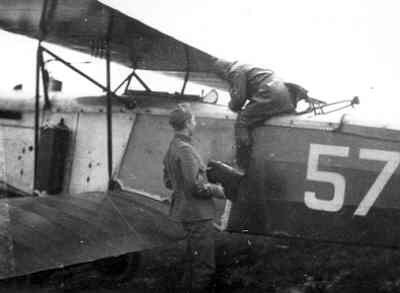
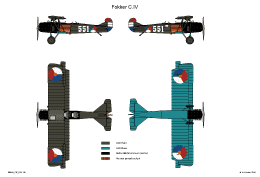
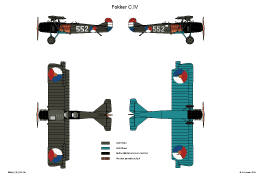
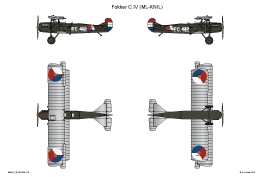
 Nederlands (nl-NL)
Nederlands (nl-NL)  English (United Kingdom)
English (United Kingdom)